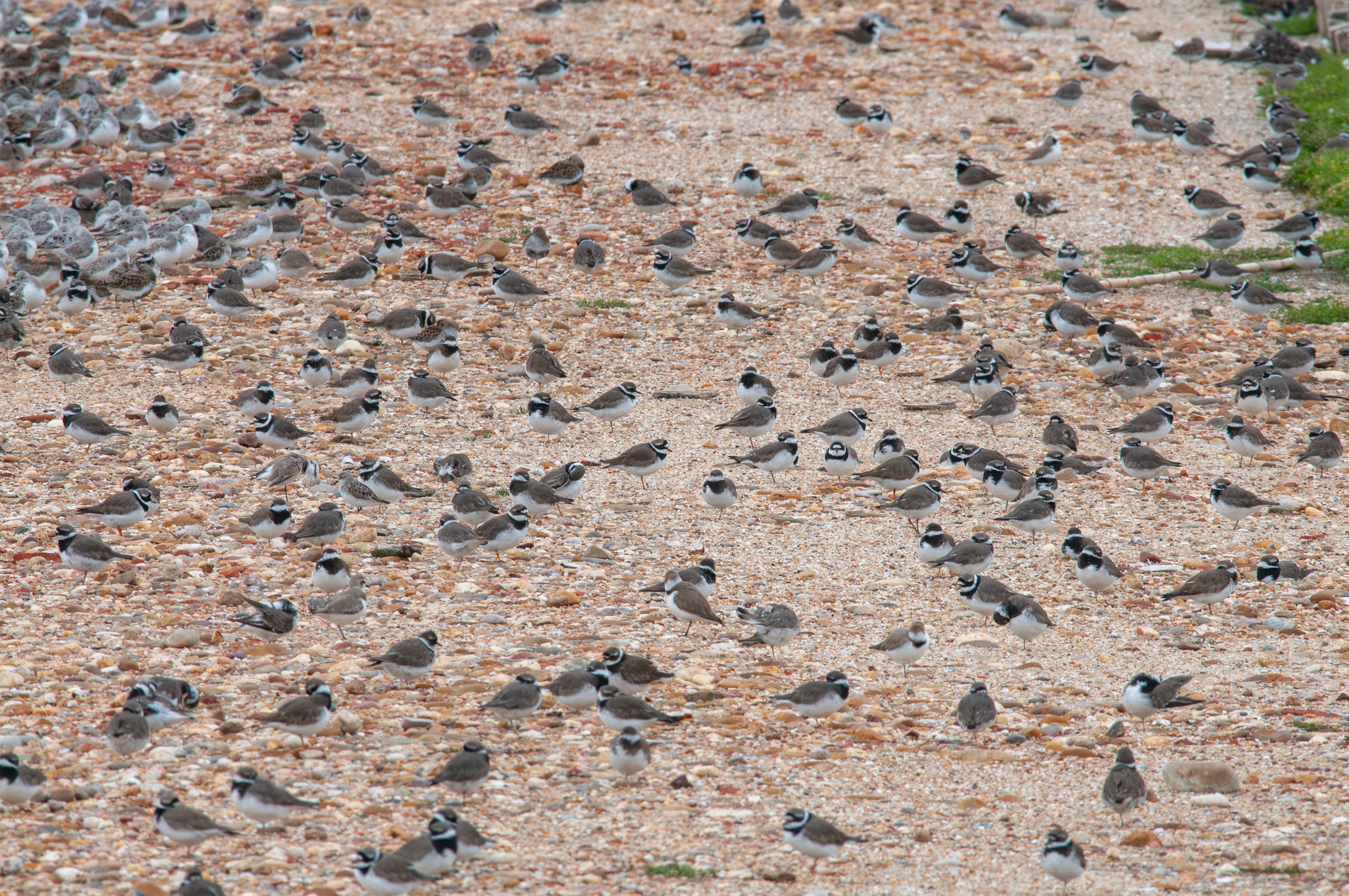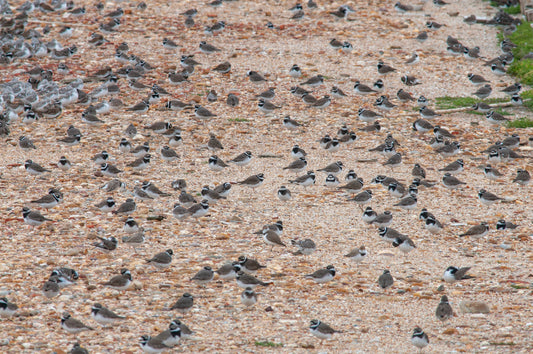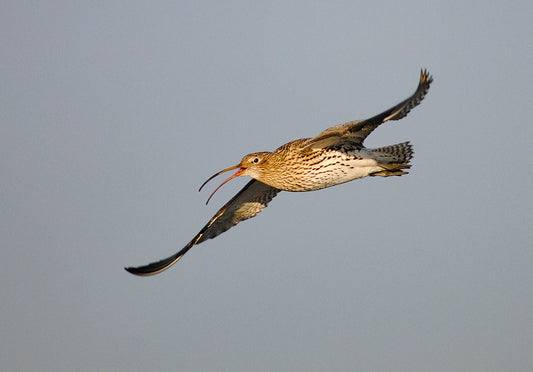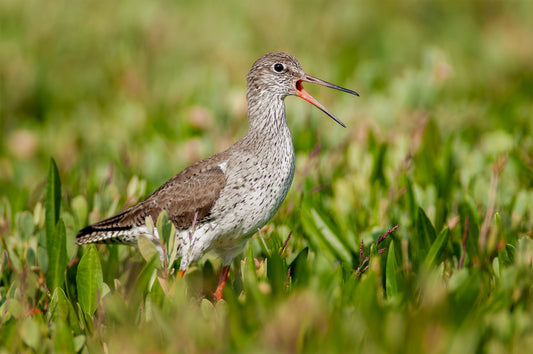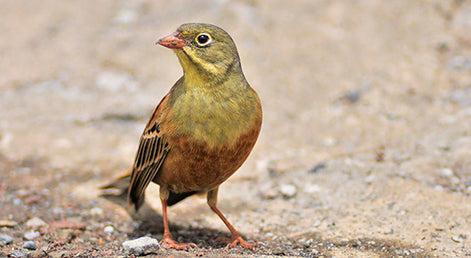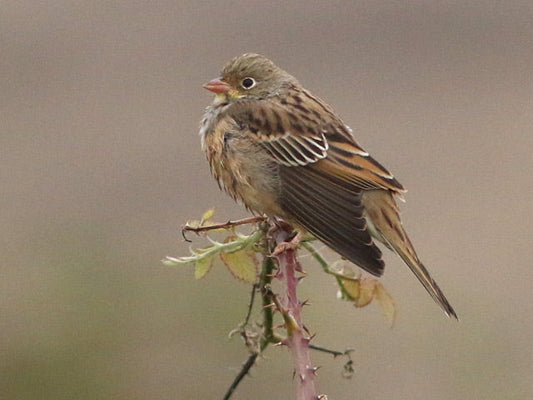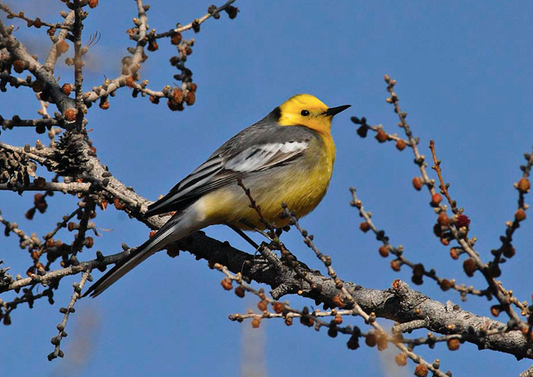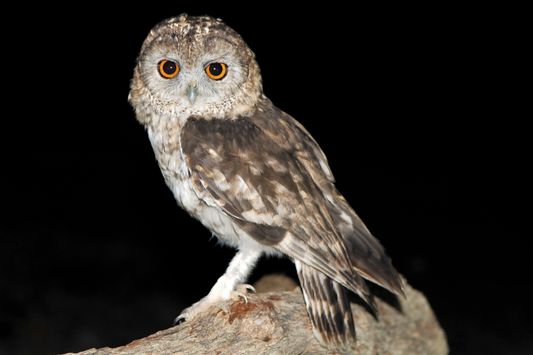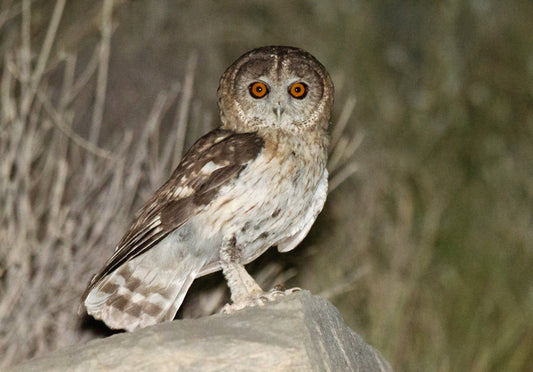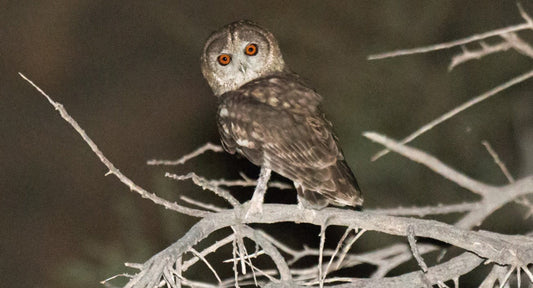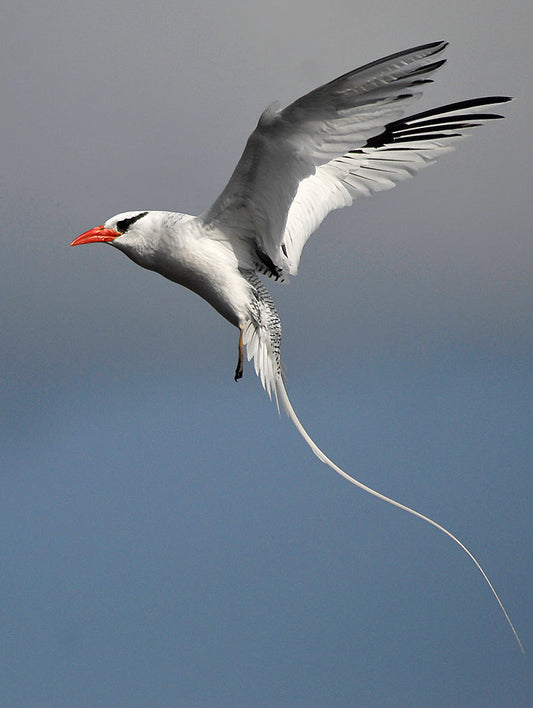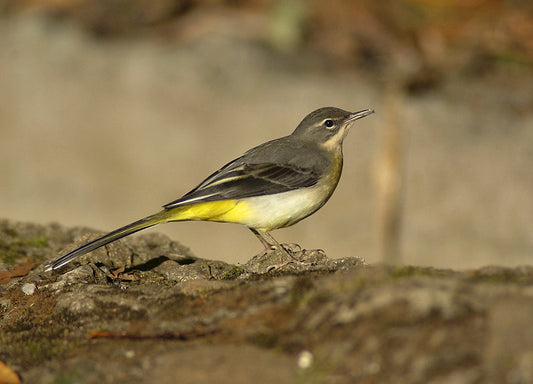HEADER PHOTO: Common Ringed Plovers Charadrius hiaticula Salinas de Brito, Alcochete, Portugal, 9 April 2014 (René Pop). It is in a flock like this, at the same site a decade later, that the Semipalmated Plover was hiding.
Article published in Dutch Birding (ISSUE ETC.), 2025
On 17 September 2024, I (Magnus Robb) visited the old salt pans of Salinas de Brito near Alcochete in the Tagus estuary, Setúbal, Portugal. This is an excellent high tide roost for small waders offering close range views of at least part of the flock, and a chance to record some of their sounds. On arrival, I saw that there was a huge gathering of Common Ringed Plovers Charadrius hiaticula (hereafter Ringed Plover), with maybe 200 on the closest two pans and another 300-400 on pans that are a little more distant. In among them were smaller numbers of Kentish Plover Anarhynchus alexandrinus and various Calidris sandpipers. I put a parabolic recorder on the ground, balanced against a bush and pointing at the densest part of the nearest flock and stood nearby scanning with my telescope, hoping to find an interesting small wader or to make some useful recordings while searching. I was not listening with headphones, partly because I wanted to keep my acoustic ‘view’ as wide as possible, instead of hearing predominantly what the parabola was pointing at.
While roosting, Ringed Plovers are highly vocal, and what we hear is mainly the rather musical aggressive song (described below) as individuals challenge one another in a horizontal body posture. Occasionally a few very short, harsh expletives accompany moments of actual physical contact. There was a constant rippling sound coming from the flock, with one or more singing Ringed Plovers audible at almost any moment in time, often a whole chorus at once.
While listening, at one point I thought I heard a snatch of Semipalmated Plover C semipalmatus song, a sound I had learned on two trips to Canada, one of them just four months previously. I left the recording equipment where it was but listened more carefully while scanning the flock with greater anticipation. Unfortunately, however, I did not hear the song again, nor did I find any individual that looked to me like a strong candidate, at least not in the nearer part of the roost that I could see well. Once or twice the whole flock took off and I heard no flight calls that sounded like a possible Semipalmated. I stayed watching the roost for two hours and gradually lost confidence in what I had heard, so much so that when I got home, I did not bother to listen to my recording for nearly a week.
When I did check the recording, I was astonished to find not just one but seven short snatches of Semipalmated Plover song. Most of them were faint but the last two were much clearer, as if the bird had moved to a more favourable position in relation to the microphone. Naturally, I returned to the roost as soon as I could, but by this date the moon was in its last quarter, the tides were weaker and as a result there were only c 180 Ringed Plovers present, with many alterative roosting options available to the rest. Neither I nor anyone else ever saw the Semipalmated that had been singing, and its identification relies solely on the songs recorded.
The Semipalmated Plover at Salinas de Brito was submitted and has been accepted by the Portuguese rarities committee as the first for continental Portugal.
Game changer
The realisation that a Semipalmated Plover can be picked out by song from a very large roost of Ringed Plovers, unseen and without having heard flight calls, is something of a game changer. It had never crossed my mind that this might be possible but given how much singing can be heard in these roosts, it should perhaps not come as such a surprise. Based on Sound Approach recordings from North America, online collections of Xeno-canto and Macaulay Library, and learning from the experience in Portugal, the present paper aims to explain how to use songs for identifying Semipalmated Plover at any time of year in a Western Palearctic context but especially during the non-breeding season. Two common call-types will also be considered for convenience, but the main body of the article describes the principal song variations in Ringed and Semipalmated and explains how the two species differ in them.
The accompanying sonagrams have all been made at the same scale and are annotated to indicate which song variants they show. The captions refer to the entire recording from which a short section is shown in each sonagram.
Common call-types throughout year
Flight calls
As keen birders know, flight calls of Semipalmated Plover are often the best way of clinching the identification of a vagrant. Since flight calls played no role in the identification of the September 2024 individual in Portugal, it would be tempting to leave them out of the present paper. A reminder of the differences, however, with a couple of representative examples, will surely be helpful. Besides, they help to get a feel for the song differences.
In both Semipalmated Plover and Ringed Plover, flight calls and song are related, and alarm-threat calls form a link between the two. Several of the general features that separate flight calls are the same as those that separate songs of the two species. For example, both flight calls and song units are generally shorter in Semipalmated, as well as having much more angular inflections and reaching both higher and lower frequencies than in Ringed.
In Ringed Plover, the default flight call in sustained flight (eg, migrating at night) is a rather plain, pure-toned puuuip, a relatively low-pitched whistle for a bird of its size (figure 1-2). The pitch sounds fairly ‘flat’, ie, sustained on a single pitch, but diagnostically ends with a brief and distinct upward inflection. Variations concern the length, the pitch and the degree to which the longer first part of the call may have a slight descending inflection. Sometimes, the pitch may dip more noticeably in the middle, showing as a shallow U-shape in sonagrams. Another common variation, especially in flocks, is for flight calls to become shorter, more closely resembling alarm-threat calls (see below).

FIGURE 1 Common Ringed Plover / Bontbekplevier Charadrius hiaticula, Tacumshin, Wexford, Ireland, 20:19, 19 July 2015 (Killian Mullarney). Typical flight calls given by breeding individual, with minimal inflection of sustained part of call. 150719.KM.201932.01.
FIGURE 2 Common Ringed Plover / Bontbekplevier Charadrius hiaticula, Leziria Grande, Vila Franca de Xira, Portugal, 04:06, 22 September 2020 (Magnus S Robb). Nocturnal flight calls, showing slight dip in middle of call. Background: Greater Flamingo / Flamingo Phoenicopterus roseus. 200922.MR.040622.21.
Semipalmated Plover has shorter flight calls that are distinctly higher-pitched (figure 3-4). They are also far more strikingly inflected, having a deep V-shaped dip in the middle. This gives them an almost squeaky timbre compared to the mellow fluty timbre of Ringed Plover. The V also makes Semipalmated’s call sound more obviously disyllabic than that of Ringed, the second ‘syllable’ being slightly higher-pitched than the first. Chuweep would fit many calls. A common variant has a rather clipped, hard ending with a split-second hint of a lower pitch, sounding like an almost trisyllabic chuwiyuk. In fact this harder ending is nearly always visible as a vertical structure in sonagrams of calls recorded at close range, but sometimes less audible.

FIGURE 3 Semipalmated Plover / Amerikaanse Bontbekplevier Charadrius semipalmatus, Mindelo, São Vicente, Cape Verde Islands, 17:13, 3 December 2012 (Magnus S Robb). Two typical flight calls of vagrant. Background: Sanderling Calidris alba. 121203.MR.171342.11.
FIGURE 4 Semipalmated Plover / Amerikaanse Bontbekplevier Charadrius semipalmatus, Brigantine, New Jersey, USA, 23:17, 17 May 2023 (Magnus S Robb & Joseph Smith). Nocturnal flight calls with harder ending. 230517.MR.231742.22.
Alarm-threat calls
Songs of both Ringed Plover and Semipalmated Plover are derived from their alarm-threat calls. During the breeding season this is the call you hear when a breeding adult stands its ground or moves boldly closer while you stand still to have a good look at it. Then the moment you start walking again it switches to something virtually identical to its flight call, while fighting the urge to depart. During the non-breeding season, we can often hear alarm-threat calls too, especially in the context of the flock. At times these may serve as an assertive reminder to flock mates to respect each other’s ‘personal space’.
Ringed Plover’s alarm-threat call is a brief, lower-pitched and often subtly disyllabic whistle, a wriep that resembles a very abbreviated version of its flight call (figure 5). The pitch rises from the first to the second ‘syllable’, effectively two tiny ripples in the pitch contour. Calls intermediate between flight and alarm-threat calls are common, especially in flocks. Indeed, Miller et al (2025) used sonagrams of Ringed Plover ‘alarm calls’ to illustrate difficulties involved in categorising call-types in the face of fluid variation.
Semipalmated’s alarm-threat call sounds very different (figure 6). First, we hear a short whistle with an identifiable pitch, then there is an abrupt change to a much deeper, gruff and pitchless -ùk ending with a timbre reminiscent of certain calls of Ruddy Turnstone Arenaria interpres. In simpler terms this is an abrupt descending call that might be transcribed as iyùk. As in Ringed, calls intermediate between flight and alarm-threat also exist.

FIGURE 5 Common Ringed Plover / Bontbekplevier Charadrius hiaticula tundrae, Båtfjordfjellet, Varanger, Finnmark, Norway, 03:52, 15 July 2018 (Dick Forsman). Alarm-threat calls of adult, with its mate at distance. Background: European Golden Plover / Goudplevier Pluvialis apricaria. 180715.DF.035200.20.
FIGURE 6 Semipalmated Plover / Amerikaanse Bontbekplevier Charadrius semipalmatus, Quill Lakes, Saskatchewan, Canada, 04:38, 16 May 2024 (Magnus S Robb). Alarm-threat calls of migrant. Although this individual was flying, calls sound very much same when given from standing position. Background: Canada Goose / Grote Canadese Gans Branta canadensis, Gadwall / Krakeend Mareca strepera, Least Sandpiper / Kleinste Strandloper Calidris minutilla and White-throated Sparrow / Witkeelgors Zonotrichia albicollis. 240516.MR.043801.01.
Song patterns in breeding season
Rhythmically repeated songs (RRS)
The main song type associated with song flights in both species is rhythmically repeated song (‘RRS’ in the sonagram annotations). In song flights of both species, it is only males that use this song type (Cramp & Simmons 1983, Nol & Blanken 2020). Miller (1986) named this vocalisation RRC (rhythmically repeated call) but we see no reason to avoid the term ‘song’ for such a ritualised vocal performance, this likely being the word that would occur to most birders. With respect, we change RRC to RRS.
Ringed Plover is one of the earliest breeding wader species in Europe, and in its southern North Sea breeding grounds males may already be performing song flights in fair weather as early as February.
Their rhythmically repeated song is a series of short disyllabic whistles resembling alarm-threat calls, but each immediately followed by a lower-pitched gruff note that may not be noticeable from a distance (figure 7). The speed of delivery is c 3 units/sec. The gruff notes sound so different from the whistles that if noticed, one could easily think they are coming from another species. Rhythmically repeated songs of nominate hiaticula and high arctic tundriae and ‘psammodrama’ are indistinguishable from one another.

FIGURE 7 Common Ringed Plover / Bontbekplevier Charadrius hiaticula tundrae, Tiksi, Yakutia, Russia, 2 July 2004 (Magnus S Robb). Rhythmically repeated song in flight. Background: White Wagtail / Witte Kwikstaart Motacilla alba and redpoll / barmsijs Acanthis. 04.036.MR.11305.01.
Semipalmated Plover’s rhythmically repeated song also consists of units that are an elaborated version of its alarm-threat calls (figure 8). At full tilt, the speed of delivery averages slightly faster than that of Ringed Plover, typically c 3-3.5 units/sec but often faster. Each unit starts a little husky, ascending sharply to a whistled central part then ending with a gruff -ùk. Semipalmated song attains a much higher pitch than Ringed and each unit sounds abrupter. The gruff -ùk endings really stand out.

FIGURE 8 Semipalmated Plover / Amerikaanse Bontbekplevier Charadrius semipalmatus, Cambridge Bay, Nunavut, Canada, 21:05, 21 June 2016 (Magnus S Robb). Rhythmically repeated song in flight. Background: Lapland Longspur / IJsgors Calcarius lapponicus. 160621.MR.210500.01.
Nol & Blanken (2020) highlighted several of the same differences between what they called display calls of the two species (based on sonagrams in Miller 1986), but stated erroneously that only Ringed Plover ends in a rich harmonic section, the lower-pitched gruff note described previously. In fact both do, Semipalmated's rich harmonic ending being its -úk, which has a higher-pitched fundamental than Ringed, and is spread across a much wider frequency range.
In the breeding season, both species may give long, monotonous bouts of rhythmically repeated song lasting for several minutes without much variation, especially in song flights, but there is also a second song type that occurs frequently.
Aggressive songs (AS)
In song flights of both species, rhythmically repeated songs often lead directly on to an alternative song type at a difference pace. This song type can also be used in shorter sequences on the ground, including when threatening conspecifics with lowered head and a horizontal crouched posture. It is used in this way by both sexes (Cramp & Simmons 1983). Aggressive songs of the two species (‘AS’ in the sonagrams) could hardly be more different from one another, and will immediately strike any birder hearing them as belonging to two different species. Indeed, it is not even clear that they derive from the same ancestral prototype. Aggressive songs of Ringed Plover and Semipalmated Plover have not been compared in any detail in previous literature.
Ringed Plover’s aggressive song is a lyrical undulation at a slightly more relaxed repetition rate than its rhythmically repeated song (figure 9-10). Each unit is dominated by a rather long, disyllabic whistle, accented and higher-pitched towards the end. There are no gruff endings to the units, and the whistles stay within a relatively narrow frequency range. Aggressive song of Ringed may invite confusion with undulating but trisyllabic songs of Common Redshank Tringa totanus. That this lyrical-sounding song type should communicate aggression seems counterintuitive but watching the behaviour of Ringed Plovers at any time of the year will soon confirm this observation.

FIGURE 9 Common Ringed Plover / Bontbekplevier Charadrius hiaticula hiaticula, Texel, Noord-Holland, Netherlands, 17 February 2005 (Magnus S Robb). Aggressive song followed by rhythmically repeated song, ending with whisper-song. Background: Common Teal / Wintertaling Anas crecca. 05.001.MR.01905.22.

FIGURE 10 Common Ringed Plover / Bontbekplevier Charadrius hiaticula tundrae, Tiksi, Yakutia, Russia, 2 July 2004 (Magnus S Robb). Aggressive song used as threat on ground, few units of rhythmically repeated song preceding it. Background: Common Snipe / Watersnip Gallinago gallinago and Arctic Redpoll / Witstuitbarmsijs Acanthis hornemanni exilipes. 04.036.MR.11510.01.
Semipalmated Plover’s aggressive song is more obviously hot-tempered (figure 11). Starting with units resembling those of rhythmically repeated song, these rapidly shorten while accelerating to a dramatic 12-16 units/sec. The pitch of the units also falls during this acceleration. Usually the whole outburst lasts less than a second. Using a human analogy, Semipalmated’s aggressive song might be compared to a nervous, extremely fast, descending chuckle.

FIGURE 11 Semipalmated Plover / Amerikaanse Bontbekplevier Charadrius semipalmatus, Cambridge Bay, Nunavut, Canada, 02:23, 24 June 2016 (Magnus S Robb). Complete threat displays, containing tiny snatch of rhythmically repeated song accelerating directly into aggressive song. Following this, there is single unit of whisper-song, then two units morphing back into rhythmically repeated song. Background: Cackling Goose / Kleine Canadese Gans Branta hutchinsii and Lapland Longspur / IJsgors Calcarius lapponicus. 160624.MR.022348.01.
In most cases when rhythmically repeated song of Semipalmated Plover accelerates into aggressive song, this is immediately followed by a couple of units of whisper-song.
Whisper-song (WS)
In both species, there is a third song-variant that comes across as a winding down of the tension. Muffled and lower-pitched than rhythmically repeated and aggressive songs, whisper-song (‘WS’ in the sonagrams) often marks the end of a bout of singing. Since it never appears in isolation, whisper-song is perhaps best not described as a ‘song type’.
In Ringed Plover, whisper-song is a quiet, low-pitched whirring at a steady 4 units per second, lasting a few seconds (figure 12). It has a purring quality due to three or four tiny pulses ending each unit, showing as vertical lines in sonagrams. Whisper-song usually follows rhythmically repeated song but occasionally comes after aggressive song.

FIGURE 12 Common Ringed Plover / Bontbekplevier Charadrius hiaticula hiaticula, Texel, Noord-Holland, Netherlands, 17 February 2005 (Magnus S Robb). Rhythmically repeated song followed by whisper-song. Background: Snow Bunting Plectrophenax nivalis. 05.001.MR.01341.02.
In Semipalmated Plover, whisper-song usually appears directly after a volley of aggressive song (figure 13). In the available recordings it seldom exceeds two or three units before either petering out or morphing back into rhythmically repeated song. Whisper-song of Semipalmated is quieter and lower-pitched than its rhythmically repeated or aggressive song and consists of longer notes that have a crooning timbre and subtle, shallow modulations. Units are delivered at a rate of c 2 per second, much slower than in rhythmically repeated song. As in Ringed Plover there are often one or two tiny pulses ending each unit, showing as vertical lines, but these are faint and only show on sonagrams of close-range recordings.

FIGURE 13 Semipalmated Plover / Amerikaanse Bontbekplevier Charadrius semipalmatus, Cambridge Bay, Nunavut, Canada, 18:55, 19 June 2016 (Magnus S Robb). Song flight with rhythmically repeated song, accelerating into aggressive song, followed by two units of whisper-song and resumption of rhythmically repeated song. Second male sings in distance. Background: American Pipit / Amerikaanse Waterpieper Anthus rubescens. 160619.MR.185543.01
Songs in non-breeding season
In the non-breeding season, Ringed Plover drops its rhythmically repeated song with just the occasional tiny hint of it remaining. All we usually hear is the more lyrical aggressive song, delivered with a greater range of individual variation than is apparent during the breeding season (figure 14). Ringed also stops using whisper-song, which in this species is strongly associated with rhythmically repeated song.

FIGURE 14 Common Ringed Plover / Bontbekplevier Charadrius hiaticula, Salinas de Brito, Alcochete, Setúbal, Portugal, 15:32, 17 September 2024 (Magnus S Robb). Chorus of aggressive songs from flock of c 500 individuals on day that Semipalmated Plover C semipalmatus was present. Background: Lesser Black-backed Gull / Kleine Mantelmeeuw Larus fuscus. 240917.MR.153215.22.
Semipalmated Plover, meanwhile, continues to use both song types plus whisper-song (figure 15). Indeed, the full threat display of Semipalmated in the non-breeding season seems to be rhythmically repeated – aggressive – whisper, often followed by one or two more final units of rhythmically repeated song.

FIGURE 15 Semipalmated Plover / Amerikaanse Bontbekplevier Charadrius semipalmatus, Brigantine, New Jersey, USA, 06:44, 14 May 2023 (Magnus S Robb & Joseph Smith). Full threat display of presumed migrant in non-breeding context: rhythmically repeated song accelerating into aggressive song, then two quiet units of whisper-song. Background: Canada Goose / Grote Canadese Gans Branta canadensis, Laughing Gull / Lachmeeuw Larus atricilla and Common Yellowthroat / Gewone Maskerzanger Geothlypsis trichas. 230514.MR.064431.02.
In autumn the structure may be much less rigid than in the breeding season. Rhythmically repeated song becomes more irregular in its delivery, aggressive song can be a very short outburst or show weaker acceleration, often leading straight back to more rhythmically repeated song, and there may only be hints of whisper-song (figure 16). The maximum frequency of the units may be lower, with shorter units only reaching 2 kHz or so.

FIGURE 16 Semipalmated Plover / Amerikaanse Bontbekplevier Charadrius semipalmatus, Stone Harbour, New Jersey, USA, 13:30, 20 September 2004 (Killian Mullarney). Fairly subdued threat displays of two or three individuals in autumn. Includes rhythmically repeated, aggressive and whisper-song, best at 20.5-23 sec. Background: Semipalmated Sandpiper / Grijze Strandloper Calidris pusilla. 04.006.KM.00532.21.
Little Ringed Plover
Little Ringed Plover C dubius can mix with Ringed Plovers and shows homologous song types. Its rhythmically repeated song is much slower, delivered at around 1.3-1.4 units/sec, or less than half the rate of either Ringed or Semipalmated Plover. Little Ringed aggressive song is delivered at 5.8-6.2 units/sec, much faster than its rhythmically repeated song but still only half the speed attained by Semipalmated. Also, Little Ringed does not show the rapid acceleration from rhythmically repeated song to aggressive song shown by Semipalmated.
Plover sound-recorded at Salinas de Brito
The plover sound-recorded at Salinas de Brito gave rhythmically repeated song at least seven times in two hours, once accelerating into aggressive song, two other times accelerating but without giving full aggressive song, and three times giving whisper-song. Most of the recordings were distant and faint. Only the last two sequences of song really stood out above the background chorus of Ringed Plovers.
In the clearest example (figure 17), six units of rhythmically repeated song are immediately followed by two units of whisper-song. The rhythmically repeated song lasts 1.33 seconds (mean 4.5 units/sec), and the whisper-song lasts 1 second (2 units/sec). All the rhythmically repeated units have an -ùk ending, rich in frequency bands ranging from 1 to c 7 kHz. Each unit has a rising pitch in the initial part. Unit 1-3 sound husky throughout this rising part but in unit 4-6, only the start is husky and a whistled timbre breaks through. Indeed, the pattern for unit 4-6 is the classic one illustrated by Miller (1996): a harmonically rich, modulated first part, rising whistled central part and a harmonically rich final part with a wide frequency range. The two units of whisper-song at the end are long, low-frequency crooning notes with a fine, shallow modulation. They are almost uninflected and the first one ends with a barely audible tip at 2.85 sec, showing as a faint vertical line at c 3 kHz in the sonagram. This is one of the faint pulses that whisper-song units often end with.

FIGURE 17 Semipalmated Plover / Amerikaanse Bontbekplevier Charadrius semipalmatus, Salinas de Brito, Alcochete, Setúbal, Portugal, 16:07, 17 September 2024 (Magnus S Robb). Six units of rhythmically repeated song followed by two units of whisper-song. Background: Common Ringed Plover / Bontbekplevier C hiaticula. 240917.MR.160659.12.
In the other song sequence that stood out, a section of six rhythmically repeated units (mean 4.5 units/sec) then accelerates part-way towards aggressive song for units 7-9 (11 units/sec), after which there are three more units of rhythmically repeated song (4.5 units/sec), followed by a single wheezy, lower-pitched note that may be a hint of whisper-song (figure 18). The rhythmically repeated song units in this sequence have a rather husky timbre, as in the first three units of the preceding example. All have typical -ùk endings with frequencies ranging from 1.3-6.5 kHz.

FIGURE 18 Semipalmated Plover / Amerikaanse Bontbekplevier Charadrius semipalmatus, Salinas de Brito, Alcochete, Setúbal, Portugal, 17 September 2024 (Magnus S Robb). Rhythmically repeated song accelerating part-way towards aggressive song, followed by a single wheezy note that may be whisper-song. Background: Common Ringed Plover / Bontbekplevier C hiaticula and Sanderling / Drieteenstrandloper Calidris alba. 240917.MR.154847.22.
One further example is worth including, despite being a very poor quality recording. Headphones are recommended for listening to the recording, which has been filtered to reduce the noise of a passing car. The sonagram (figure 19) shows the classic threat display sequence: rhythmically repeated song accelerating into aggressive song, followed by whisper-song. It starts hesitantly with five units of rhythmically repeated song (mean 2 units/sec) followed by an outburst of aggressive song (reaching c 12 units/sec) and then two very faint units of whisper-song (2 units/sec). When this sequence was recorded, the plover was presumably more distant than in the other two examples described above.

FIGURE 19 Semipalmated Plover / Amerikaanse Bontbekplevier Charadrius semipalmatus, Salinas de Brito, Setúbal, Portugal, 17 September 2024 (Magnus S Robb). Distant song sequence with rhythmically repeated song, aggressive song, very faint whisper-song, ending with single unit of rhythmically repeated song. Background: Common Ringed Plover / Bontbekplevier C hiaticula. 240917.MR.145534.13.
Identification as Semipalmated Plover
The songs recorded at Salinas de Brito showed no resemblance to any sounds of Ringed Plover but clearly matched recordings of Semipalmated Plover made in North America. They could be attributed to Semipalmated Plover based on:
1 the use of multiple song-variants (rhythmically repeated, aggressive and whisper-song) during migration, typical for Semipalmated, whereas Ringed only uses aggressive song during migration;
2 the structure of the units of rhythmically repeated song, starting with a husky timbre, leading to a rapidly rising whistle attaining c 3 kHz, much higher than Ringed, and ending abruptly with an accented -uk containing frequencies from 1 to over 7 kHz;
3 the delivery of these units at 4.5 units/sec, considerably faster than in Ringed;
4 the occurrence of a very fast aggressive song, accelerating out of rhythmically repeated song and reaching 12 units/sec at the end (figure 19), unlike anything in the repertoire of Ringed;
5 in each unit of aggressive song, the predominance of an -uk ending containing a wide range of frequencies. Aggressive song of Ringed lacks an -uk ending;
6 the occurrence of a slow, crooning whisper-song, delivered at a rate of 2/sec (eg, figure 17), slower and lower-pitched than in Ringed, having only one or two units each time;
and 7 the subtle, shallow modulations in this whisper-song, lacking in Ringed, and only having the tiniest hint of a pulsed ending whereas pulses are much more obvious in Ringed.
Actual field conditions
Rhythmically repeated and aggressive songs of Semipalmated Plover are clearly different enough to attract attention on a background of Ringed Plover aggressive songs, even just a single individual in a very large flock of Ringed, if we assume it is not drowned out by all the other sounds going on. This is mainly due to the higher-pitched whistles in rhythmically repeated song and the gruff -ùk endings to every unit of either song type in Semipalmated. In the recordings from Salinas de Brito in September 2024 these features were diagnostic, even in the more distant sequences. In hindsight then, it seems surprising I only noticed a single sequence of Semipalmated song at the time, while the recording showed that there had been several.
There are two possible explanations. One is that the singer was not very close, and the parabolic microphone made it sound closer in the recording than it had been for the naked ear. This would help to explain why I did not manage to see any candidate in the nearer part of the roost, despite having a fairly good idea of what I was looking for. Something else to consider is that although I was familiar enough with Semipalmated Plover song for it to trigger something in my mind, I did not at this point have such a clear idea of the different song variants and how they correspond to those of Ringed Plover as I do now.
Let’s be honest. It can be quite a challenge to pick out one bird in 500 even if it sounds distinctly different, just because there are so many sounds going on, a lot for our brains to process. There were other waders present, too, besides Charadrius plovers.
While acceptance of a major rarity merits detailed analysis of the sound recordings, a cerebral exercise analysing sonagrams visually on a computer, what about identifying a Semipalmated Plover song in Europe by ear in the field, then? In practice, as so often in birding, the trick us to be as well prepared as possible, so that we can recognise something special when we hear it, or at least suspect that it merits close attention. When the plover migration peaks next time, I should be far better primed to pick out any Semipalmated Plover song from the flock, whether I manage to see the bird or not. I hope that anyone who has read this far and especially, who has listened to the examples, will also be better primed.
Samenvatting
AMERIKAANSE BONTBEKPLEVIER BIJ SALINAS DE BRITO, PORTUGAL, IN SEPTEMBER 2024 EN HERKENNING OP BASIS VAN ZANG IN HET WESTPALEARCTISCHE GEBIED Op 17 september 2024 bezocht de auteur de zoutpannen Salinas de Brito in de Taag-delta bij Alcochete, Setúbal, Portugal, om geluid op te nemen van een groep van 500-600 Bontbekplevieren Charadrius hiaticula. Tijdens het opnemen meende hij eenmaal een flard van zang van Amerikaanse Bontbekplevier C semipalmatus te horen, een dwaalgast die nog niet eerder op het vasteland van Portugal was vastgesteld. Onzeker van de determinatie, ook omdat hij in de groep geen exemplaar kon zien met uiterlijke kenmerken van Amerikaanse, liet hij het idee vallen. Dagen later ontdekte hij bij het beluisteren van een non-stop opname met zijn parabool zeven fragmenten zang van Amerikaanse. De vogel kon hij bij een volgend bezoek niet meer terugvinden zodat de determinatie volledig op vocalisaties is gebaseerd. Bij het analyseren kwam hij tot de conclusie dat deze soort in grote groepen Bontbekplevieren makkelijker aan zijn zang dan zijn uiterlijk is terug te vinden: een ‘game-changer’ voor het vinden van Amerikaanse in de WP. De waarneming is aanvaard door de Portugese zeldzaamhedencommissie als de eerste Amerikaanse Bontbekplevier voor continentaal Portugal.
In het artikel worden de geluidsverschillen tussen beide soorten besproken, met speciale aandacht voor de zang. Amerikaanse Bontbekplevier produceert drie hoofdvarianten aan zang: ritmisch-herhaalde-zang (RRS), agressieve zang (AS) en fluisterzang (WS). De ritmisch-herhaalde-zang bevat hoge fluittonen gevolgd door een ruw -ùk aan het eind, met een breed frequentiebereik en sneller herhalend dan Bontbekplevier. De agressieve zang versnelt opvallend tot 12-16 eenheden per seconde, als een ‘nerveus, zeer snel aflopend gehinnik’. De fluisterzangen zijn een zacht, zoemend neuriën. Bontbekplevieren daarentegen produceren vocalisaties die uitbundiger en muzikaler zijn met een smaller frequentiebereik en de agressieve zang ontbeert ruwe -ùk einden. Een belangrijk verschil tussen beide soorten is dat Bontbekplevier buiten de broedtijd vooral agressieve zang laat horen terwijl Amerikaanse alle drie de zangtypen blijft gebruiken.
De beste opname van Salinas de Brito bevatte zes eenheden van ritmisch-herhaalde-zang gevolgd door twee stukken fluisterzang, diagnostisch voor Amerikaanse Bontbekplevier. Een tweede opname had 12 eenheden van ritmisch-herhaalde-zang en hints van agressieve zang en fluisterzang. Een veel zachtere opname liet een volledige opeenvolging van alle drie de zangtypen horen: ritmisch-herhaalde, agressieve en fluisterzang. De conclusie is dat met een goede kennis van de variaties in zang van beide soorten de kans toeneemt om Amerikaanse in grote groepen Bontbekplevieren te ontdekken.
Acknowledgements
Special thanks are due to Stanislas Wroza for his valuable comments.
References
Cramp, S & Simmons, K E L (editors) 1983. The birds of the Western Palearctic 3. Oxford.
Miller, E H 1996. Acoustic differentiation and speciation in shorebirds. In: Kroodsma, D E & Miller, E H (editors), Ecology and evolution of acoustic communication in birds, Ithaca, p 241-257.
Miller, E H, Lislevand, T & Tomkovich, P S 2025. Wader sounds: What did you hear? Wader Study 132: 1-7.
Nol, E & Blanken, M S 2020. Semipalmated Plover Charadrius semipalmatus. In: Poole, A F (editor), Birds of the world, Ithaca Website: https://doi.org/10.2173/bow.semplo.01.
Magnus S Robb, Sintra, Portugal (magnus.robb@me.com)
The Sound Approach, Wareham, England

